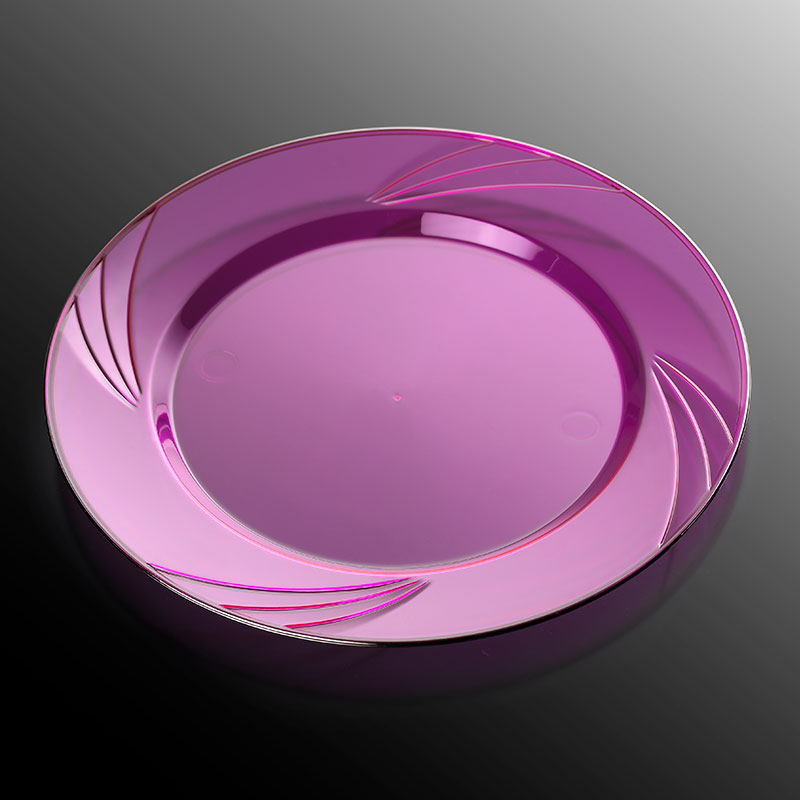Why Are Plastic Plates a Popular Choice for Dining and Events?
2024-12-26
When it comes to serving food, the choice of plates plays a significant role in the overall dining experience. Whether it’s a casual family meal or a large event, plastic plates have become a popular option for many reasons. But why are plastic plates so widely used, and what makes them stand out compared to other materials?
In this blog, we’ll explore the advantages and drawbacks of plastic plates, their versatility in different settings, and why they continue to be a go-to choice for many households, restaurants, and event planners.
1. What Makes Plastic Plates So Convenient?
Plastic plates offer a unique combination of convenience, affordability, and durability. Here are some key reasons why they are so widely chosen:
- Lightweight: One of the primary benefits of plastic plates is their lightweight nature. Unlike ceramic or glass, plastic plates are easy to handle, stack, and carry, making them perfect for outdoor events, picnics, and parties.
- Durable: Although plastic plates may seem flimsy compared to their ceramic counterparts, many modern plastic plates are made to be quite sturdy and resistant to breakage. This makes them an ideal choice for events where plates may be accidentally dropped or mishandled.
- Cost-effective: Plastic plates are typically much cheaper than alternatives like porcelain or glass. Their affordability makes them an attractive option for large events, catering businesses, and even for everyday use at home.
- Variety of Designs: Plastic plates come in a wide range of colors, sizes, and designs. From simple, clear plastic to ornate plates designed for special occasions, the versatility in design ensures there’s a plastic plate for nearly every event or dining need.
2. Are Plastic Plates Environmentally Friendly?
In recent years, the environmental impact of plastic products has been a major topic of discussion. So, are plastic plates environmentally friendly? The answer is nuanced.
Traditional plastic plates, made from materials like polystyrene or polypropylene, are not biodegradable and can take hundreds of years to break down. However, with growing awareness of environmental issues, manufacturers have started producing eco-friendly alternatives, such as:
- Biodegradable Plastic Plates: These plates are made from renewable resources, like cornstarch or sugarcane fibers, and break down more quickly in the environment.
- Recyclable Plastic Plates: Some plastic plates are designed to be recyclable, allowing them to be repurposed into new products rather than ending up in landfills.
While traditional plastic plates may pose a challenge to sustainability, these new alternatives are a step in the right direction for reducing waste and environmental impact.
3. Where Are Plastic Plates Most Commonly Used?
Plastic plates have a wide range of uses due to their practical benefits. Here are some common settings where they are typically used:
- Outdoor Events: Whether it’s a barbecue, picnic, or wedding reception, plastic plates are a go-to choice for outdoor events. They are sturdy enough to handle outdoor conditions, and their light weight makes them easy to transport and dispose of.
- Catering and Buffets: Catering services frequently rely on plastic plates for buffets and large gatherings. Their low cost and disposability make them an efficient choice for serving large numbers of guests quickly.
- Takeout and Fast Food: Many fast-food restaurants and takeout services use plastic plates for serving meals. They are practical for single-serving portions and are inexpensive for businesses looking to cut costs.
- Casual Dining: At home, many families use plastic plates for daily meals or snacks. They are easy to clean, and their durability makes them perfect for busy households with young children.
- Special Occasions: Some plastic plates are designed specifically for formal events like weddings or corporate parties. These plates may have intricate designs or metallic finishes that mimic the look of fine china without the fragility.
4. How Do Plastic Plates Compare to Other Materials?
While plastic plates have numerous advantages, it’s important to compare them with other common materials to understand their unique qualities:
- Plastic vs. Paper Plates: Paper plates are another popular disposable option. However, plastic plates tend to be more durable and less likely to collapse or get soggy when used for hot or moist foods. Paper plates, on the other hand, are biodegradable, making them a better choice for those focused on reducing waste.
- Plastic vs. Ceramic Plates: Ceramic plates are known for their durability and elegant appearance. However, they are much heavier than plastic plates and can be easily broken. Ceramic plates also require more careful handling and cleaning, making plastic plates a more convenient option for large events.
- Plastic vs. Glass Plates: Glass plates offer a polished and sophisticated look, but they are significantly heavier and more prone to breaking than plastic plates. For casual settings or large gatherings, plastic plates are often the better choice.
5. Are Plastic Plates Safe to Use for Food?
When choosing plastic plates for food, safety is always a priority. High-quality plastic plates made from food-grade materials are safe to use for eating and drinking. However, not all plastics are created equal. It’s essential to ensure that the plastic used is BPA-free and doesn’t leach harmful chemicals into the food.
For peace of mind, always check the manufacturer’s labeling or certifications to confirm that the plastic plates are food-safe. Opting for BPA-free, FDA-approved plastic is the safest choice for dining purposes.
6. How Can You Make Plastic Plates More Sustainable?
If you want to enjoy the convenience of plastic plates while being environmentally conscious, there are several steps you can take to reduce their impact:
- Choose Eco-friendly Options: Look for plates made from biodegradable or recyclable plastic materials. These options break down more easily in landfills or can be reused in other products.
- Reuse Plastic Plates: Instead of throwing away plastic plates after one use, consider reusing them multiple times. Many durable plastic plates are designed for long-term use and can be washed and stored for future occasions.
- Recycle Plastic Plates: If the plastic plates are recyclable, be sure to dispose of them properly by placing them in recycling bins. This helps divert plastic waste from landfills and allows for the creation of new products.
Conclusion
Plastic plates offer undeniable convenience, affordability, and versatility in a variety of settings. From casual family meals to large-scale events, they provide an easy solution for serving food and keeping your space tidy. However, it’s essential to choose high-quality, food-safe options and consider eco-friendly alternatives to mitigate their environmental impact.



